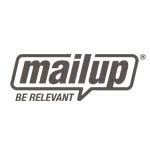Choosing the right email marketing tool is a critical decision for any business, big or small. It’s like picking a partner for your digital marketing journey—one that aligns with your goals, understands your audience, and delivers your message in the most effective way possible. Today, we’re diving into an in-depth comparison between two popular contenders in the email marketing arena: SendX and MailUp. Both platforms offer a plethora of features designed to enhance your email marketing efforts, but which one is the best fit for you? Let’s find out.
| SendX | MailUp |
|---|---|
 |  |
| G2 Score – 4.6 out of 5 stars | G2 Score – 3.7 out of 5 stars |
| TrustRadius Score -Nil | TrustRadius Score – 6.0 out of 10 |
Ease of Use and User Interface
The Importance of a User-Friendly Interface
In the world of email marketing, the ease of use and the intuitiveness of the user interface can make or break your productivity. A platform that is easy to navigate not only saves you time but also allows you to focus more on crafting compelling campaigns rather than figuring out how to use the tool. Both SendX and MailUp promise a user-friendly experience, but let’s see how they actually stack up.
SendX: Simplifying Email Marketing
SendX prides itself on its straightforward and intuitive interface. Designed with non-tech-savvy users in mind, it allows you to create, schedule, and send emails with just a few clicks. The dashboard is clean and uncluttered, presenting all the essential features upfront—making it easy for beginners to get started without feeling overwhelmed. Customizing emails is a breeze with SendX’s drag-and-drop editor, which offers a wide range of templates and design elements. This simplicity extends to its automation features, where you can set up complex email sequences without needing a manual.
MailUp: A Blend of Power and Precision
MailUp takes a slightly different approach, catering to both beginners and advanced users. Its interface is robust, offering more detailed customization options and a wide array of tools for managing campaigns. This can be a double-edged sword; while it provides more control over your email marketing efforts, it can also be a bit daunting for newcomers. However, once you get past the initial learning curve, MailUp’s capabilities are impressive. Its segmentation features and behavioral targeting options allow for highly personalized campaigns, and the platform offers detailed analytics to track your success.
Comparing the Two
When it comes to ease of use and user interface, SendX and MailUp serve two slightly different audiences. SendX is ideal for those who prefer simplicity and ease of use over everything else. It’s perfect for small businesses or individuals who are just starting out with email marketing and want a tool that gets the job done with minimal fuss. On the other hand, MailUp offers more advanced features and customization options, catering to businesses with more complex needs or those who have outgrown simpler platforms. While it may take a bit more time to master, the payoff in terms of campaign flexibility and targeting precision can be well worth the effort.
In conclusion, the choice between SendX and MailUp in terms of ease of use and user interface largely depends on your level of expertise and what you’re looking to achieve with your email marketing campaigns. If you’re after simplicity and quick setup, SendX is the way to go. But if you’re aiming for more detailed control and have the resources to invest in learning the platform, MailUp might be the better choice.
Pricing and Value for Money
Understanding the Cost of Email Marketing
When it comes to email marketing, finding a platform that offers the best bang for your buck is crucial. You want a tool that not only fits your budget but also provides the features and scalability you need as your business grows. Both SendX and MailUp offer various pricing tiers to cater to different needs, but let’s delve deeper into what you actually get for your money.
| SendX | Pricing Structure: Based on the number of subscribers, with all plans offering unlimited email sends. Basic Plans: Up to 1,000 subscribers: Starting at around $7.49/month when billed annually. Up to 2,500 subscribers: Starting at around $14.99/month when billed annually. Up to 5,000 subscribers: Starting at around $29.99/month when billed annually. Higher Volume Plans: For larger lists, the pricing continues to scale. For example: Up to 10,000 subscribers: Starting at around $39.99/month. Up to 15,000 subscribers: Pricing available upon request. |
| MailUp | Pay Per Speed Plans: MailUp’s pricing is based on sending speed rather than the number of contacts. Starts at around $65/month for the slowest sending speed. Monthly Plans: Also offers traditional monthly plans based on the number of emails sent, with prices starting at around $85/month for up to 400,000 sends. Prepaid Credits: Alternatively, you can buy prepaid credits for sending emails without a monthly fee. All plans include features like email automation, transactional emails, and analytics. |
SendX: Affordable Simplicity
SendX is known for its straightforward pricing structure, which is designed to be accessible for businesses of all sizes. One of its major selling points is the “unlimited emails” feature, allowing you to send as many emails as you want without worrying about extra charges. This can be a game-changer for businesses that rely heavily on email marketing and need to send frequent campaigns. The pricing tiers are primarily based on the number of subscribers, which means you can predict your costs as you scale. Additionally, SendX includes most of its advanced features across all plans, ensuring that even smaller businesses can take advantage of powerful email marketing tools without breaking the bank.
MailUp: Comprehensive but Costlier
MailUp takes a more granular approach to pricing, offering a range of packages that scale not just with the number of subscribers but also with the sophistication of the features you need access to. This model can provide more flexibility for businesses with specific needs, but it can also become quite expensive as you add more advanced capabilities. MailUp’s pricing reflects its comprehensive feature set, including detailed analytics, advanced segmentation, and automation options. For businesses that need these high-level features and have the budget to match, MailUp can offer significant value. However, smaller businesses or those just starting out might find the cost hard to justify compared to the more straightforward, all-inclusive pricing of SendX.
Evaluating Value for Money
When comparing the value for money between SendX and MailUp, it’s essential to consider both the immediate and long-term costs. SendX offers a more predictable and often lower cost of entry, with a pricing model that scales cleanly with your subscriber list. This can be particularly appealing for new businesses or those with a tight budget. On the other hand, MailUp’s pricing model, while potentially more costly upfront, provides access to a broader range of features that can offer better long-term value for businesses ready to dive deep into personalized, targeted email marketing strategies.
The decision between SendX and MailUp on pricing should be based on your current needs and future growth expectations. If cost-effectiveness and simplicity are your primary concerns, SendX is likely the better choice. However, if you’re looking for a platform that can offer comprehensive email marketing tools and are willing to invest more for those capabilities, MailUp could be the way to go.
The right choice depends on your marketing strategy, budget, and how much you value certain features over others. Ultimately, the best email marketing tool for you is one that aligns with your business goals and helps you connect with your audience effectively without exceeding your budget.
Email Automation and Segmentation
The Power of Targeted Campaigns
In the realm of email marketing, automation and segmentation are pivotal. They allow you to send personalized, timely emails to specific segments of your audience, significantly increasing engagement and conversion rates. A platform that excels in these areas can help you deliver the right message to the right person at the right time, with minimal manual effort. Let’s see how SendX and MailUp fare in this crucial aspect.
SendX: Automation Made Easy
SendX emphasizes simplicity across its features, and its approach to automation and segmentation is no exception. The platform offers a user-friendly automation builder that lets you create triggers based on subscriber actions, such as email opens, link clicks, and webpage visits. While it may not offer the deepest level of customization, it covers the essentials well, making it ideal for businesses looking to implement effective, straightforward automation strategies.
Segmentation in SendX is similarly straightforward, allowing you to categorize your subscribers based on various criteria, including behavior, demographics, and custom fields. This functionality is intuitive to use, enabling even those new to email marketing to start crafting targeted campaigns quickly.
MailUp: Advanced Customization and Control
MailUp provides a more sophisticated set of tools for automation and segmentation, catering to businesses that require intricate, highly personalized email campaigns. Its automation workflows can be customized extensively, allowing for complex sequences based on a wide array of triggers and conditions. This level of detail is perfect for marketers who want to fine-tune every aspect of their campaigns for maximum relevance and impact.
Segmentation capabilities in MailUp are equally advanced, offering deep insights into subscriber behavior and preferences. You can segment your audience based on nearly any criteria you can think of, allowing for highly targeted emails. This granularity makes MailUp an excellent choice for larger businesses or those with a diverse audience requiring nuanced communication strategies.
Choosing the Right Tool for Your Needs
The decision between SendX and MailUp in terms of automation and segmentation hinges on the complexity of your email marketing campaigns and the level of personalization you aim to achieve. SendX is well-suited for businesses seeking an easy-to-use platform that handles the basics of automation and segmentation effectively, without the need for extensive customization. Its straightforward approach can save time and resources, making it an excellent choice for small to medium-sized businesses or those just beginning to explore the possibilities of email marketing.
On the other hand, MailUp is the better option for businesses that require detailed, sophisticated automation workflows and deep segmentation capabilities. Its comprehensive toolset offers the flexibility and control needed to craft highly personalized campaigns that speak directly to the needs and interests of different audience segments. While this comes at the cost of a steeper learning curve and potentially higher price, the investment can pay off in terms of engagement and conversion rates for businesses with more complex needs.
In summary, both SendX and MailUp offer compelling solutions for email automation and segmentation, but the best choice depends on the scale of your operations and the sophistication of your marketing strategies. Whether you prioritize ease of use and efficiency or depth of customization and control will guide your decision towards the platform that best fits your business’s email marketing goals.

Related: Check out our free SEO suite

Analytics and Reporting
The Role of Data in Email Marketing
In the digital marketing world, data is king. Comprehensive analytics and reporting capabilities are essential for understanding the performance of your email campaigns and making informed decisions. The ability to track opens, clicks, conversions, and more can help you refine your strategy and improve your ROI over time. Let’s compare how SendX and MailUp stack up in terms of providing valuable insights into your email marketing efforts.
SendX: Straightforward and Actionable Insights
SendX focuses on making analytics accessible and understandable, even for those who might not be data experts. Its reporting dashboard provides a clear overview of your email campaign performance, including open rates, click-through rates, and subscriber growth over time. This simplicity is great for quickly gauging the success of your campaigns and identifying areas for improvement without getting bogged down in complex data analysis.
Additionally, SendX offers heatmaps for individual emails, showing where subscribers are clicking within your messages. This feature can be incredibly valuable for optimizing the design and content of your emails to maximize engagement. While SendX’s analytics might not dive as deep as other platforms, they provide all the essential information in an easy-to-digest format, making it straightforward to take actionable steps based on your data.
MailUp: In-depth Analysis and Custom Reporting
MailUp takes analytics a step further, offering a more detailed and customizable reporting experience. It caters to marketers who need to dive deep into their campaign performance metrics, offering advanced analytics that track not just the basics but also detailed subscriber behavior and campaign ROI. The platform allows you to segment your reporting by different criteria, giving you nuanced insights into how different audience segments are interacting with your emails.
One of MailUp’s standout features is its ability to integrate with Google Analytics, enhancing your ability to track the customer journey from email to website. This integration provides a more comprehensive view of how your email campaigns contribute to your overall marketing goals, including conversions and sales. For businesses that rely heavily on data to guide their marketing strategies, MailUp’s robust analytics capabilities offer the depth and flexibility needed to make informed decisions and optimize campaigns at a granular level.
Making the Right Choice for Your Business
The choice between SendX and MailUp in terms of analytics and reporting should be guided by your specific needs for data analysis and the complexity of your email marketing campaigns. If you prefer a more straightforward approach that covers all the basics and makes it easy to act on your insights, SendX is an excellent choice. Its user-friendly analytics ensure you won’t need to spend hours deciphering data, making it ideal for small to medium-sized businesses or those with simpler email marketing strategies.
Conversely, if you’re a data-driven marketer who thrives on detailed analytics and custom reporting, MailUp’s comprehensive suite of tools will likely serve your needs better. Its advanced features and integrations offer the depth of analysis required to fine-tune sophisticated email campaigns and deeply understand your audience’s behavior. While this may require a more significant investment in terms of both time and money, the potential for optimizing your campaigns and improving your ROI could be well worth it for larger businesses or those with complex marketing needs.
Ultimately, the best analytics and reporting tool for your email marketing efforts is one that aligns with your capacity to analyze data and the specific insights you need to drive your strategy forward.
Integration Capabilities
The Importance of Integrating with Other Tools
In today’s digital marketing landscape, the ability to integrate your email marketing tool with other software and services is crucial. A seamless integration ecosystem can significantly enhance your marketing efforts, allowing for more efficient workflows, better data management, and more personalized customer experiences. Whether it’s CRM systems, e-commerce platforms, or social media channels, the right integrations can amplify the impact of your email campaigns. Let’s examine how SendX and MailUp compare in their integration capabilities.
SendX: Simplified Integration for Streamlined Workflows
SendX offers a range of integrations with popular tools and platforms to streamline your marketing processes. It focuses on providing straightforward, easy-to-set-up connections with major CRM software, e-commerce platforms, and social media services. This ensures that you can quickly link your email marketing efforts with other aspects of your business, enhancing data flow and campaign coherence.
One of SendX’s strengths is its simplicity in integrating with platforms like Shopify, WordPress, and Zapier, which opens up a wide array of automation possibilities. The Zapier integration, in particular, allows SendX to connect with thousands of other apps, even if direct integrations are not available. This flexibility makes SendX an attractive option for businesses looking for a hassle-free way to connect their email marketing with other tools they’re already using.
MailUp: Extensive Integrations for Advanced Marketing Ecosystems
MailUp takes integration capabilities to a higher level, offering a broad and sophisticated range of direct integrations with various business tools and platforms. Its focus is on providing deep, customizable integrations that allow for more advanced data sharing and functionality between systems. This includes powerful CRM integrations, e-commerce solutions, and detailed analytics tools, enabling businesses to create a tightly integrated digital marketing ecosystem.
Furthermore, MailUp’s API access allows for custom integrations, giving businesses the flexibility to tailor the connection between MailUp and other systems to their specific needs. This is particularly valuable for larger organizations or those with unique workflows that require more than standard integration options.
Choosing the Right Platform for Your Integration Needs
When it comes to integration capabilities, your choice between SendX and MailUp should be influenced by the complexity of your marketing stack and the depth of integration you require. If your needs are straightforward and you value ease of use and quick setup, SendX offers a solid range of integrations that cover the most common platforms and tools used by small to medium-sized businesses. Its user-friendly approach ensures you can enhance your email marketing efforts without needing extensive technical expertise.
On the other hand, if your marketing operations are more complex and you require deep, customizable integrations to seamlessly connect a wide range of tools and platforms, MailUp is the better choice. Its extensive integration options and API access cater to businesses that need to ensure their email marketing campaigns are fully integrated into a broader digital marketing strategy.
In summary, both SendX and MailUp offer valuable integration capabilities, but the best choice for your business depends on the level of integration complexity you need and how critical seamless connectivity is to your overall marketing strategy. Whether you prioritize simplicity and ease of setup or the ability to customize and integrate deeply with a wide range of tools, selecting the platform that aligns with your integration requirements is key to maximizing the effectiveness of your email marketing campaigns.
Customer Support and Resources
The Significance of Support in Email Marketing Success
High-quality customer support and a wealth of educational resources are indispensable for maximizing the effectiveness of your email marketing platform. Whether you’re encountering technical issues, need guidance on best practices, or are looking to expand your knowledge, having access to responsive, helpful support can make a significant difference. Let’s see how SendX and MailUp stand in terms of providing support and resources to their users.
SendX: Prioritizing User Support and Learning
SendX is well-regarded for its customer support system, offering multiple channels for assistance, including email, live chat, and a comprehensive knowledge base. What sets SendX apart is not just the availability of support but its responsiveness. Users often highlight the quick response times and the helpfulness of the support team, which can be particularly valuable for businesses that need immediate assistance to resolve issues or queries.
In addition to its support services, SendX provides a rich library of educational resources. This includes tutorials, guides, and blog posts covering a wide range of topics from basic email marketing principles to advanced strategies. For businesses that are keen on learning and growing their email marketing savvy, SendX offers ample opportunities to do so, making it easier to leverage the platform’s capabilities fully.
MailUp: Comprehensive Support with a Focus on Education
MailUp matches its advanced platform capabilities with a robust support system. It offers support through email, phone, and a detailed knowledge base, ensuring users can get help in the way that suits them best. The quality of MailUp’s support is generally praised, with a particular emphasis on the depth of knowledge the support team has about the platform and email marketing in general.
Beyond direct support, MailUp excels in providing educational resources. It hosts an extensive collection of articles, whitepapers, webinars, and case studies designed to not only help users make the most out of the platform but also to advance their overall marketing knowledge. For businesses looking to dive deep into email marketing strategy and best practices, MailUp serves as a valuable resource.
Deciding on the Right Support for Your Business
The choice between SendX and MailUp in terms of customer support and resources largely depends on your preferences for learning and the level of support you anticipate needing. If you value quick, responsive support and a wide variety of easily digestible educational content, SendX is likely to meet your needs effectively. Its user-friendly approach to support and learning makes it a great choice, especially for smaller businesses or those new to email marketing.
Conversely, if you prefer a platform that offers in-depth educational materials and resources, along with a variety of support options, MailUp might be the better fit. Its comprehensive approach to customer education and support is well-suited for businesses that are looking to deepen their email marketing expertise and leverage advanced strategies.
Ultimately, both SendX and MailUp recognize the importance of support and education in email marketing success. The best platform for you will align with your preferred learning style, the complexity of your email marketing efforts, and the level of support you require to navigate any challenges that arise.
Conclusion
In conclusion, choosing between SendX and MailUp for your email marketing needs boils down to what aspects you value most for your business’s unique situation. If you’re looking for an intuitive, user-friendly platform that simplifies email marketing while still offering robust features, SendX is an excellent choice, especially for small to medium-sized businesses. Its straightforward approach to pricing, ease of use, and responsive customer support make it accessible for those new to email marketing or businesses with straightforward needs. On the other hand, MailUp caters to those requiring a more sophisticated tool, offering advanced customization, detailed analytics, extensive integration capabilities, and a wealth of educational resources. It’s suited for larger businesses or those with complex marketing strategies who are willing to invest more for deeper insights and control over their campaigns. Ultimately, the decision should align with your marketing goals, budget, and the level of sophistication you need from your email marketing tool. Both SendX and MailUp have their strengths, and the right choice will empower your email marketing efforts, driving engagement and growth for your business.
Read next:
- How to Dominate Google Rankings for Every Type of Loan Service
- Interactive Content Can Skyrocket Your Lead Capture. We Show How!
- How to Utilize Dynamic Content in Email Campaigns
- What is a SMART Plan? And, Why You Need One
- How AI LLMs will Revolutionize SEO (in 2023): Our Insights!






















Comments are closed.